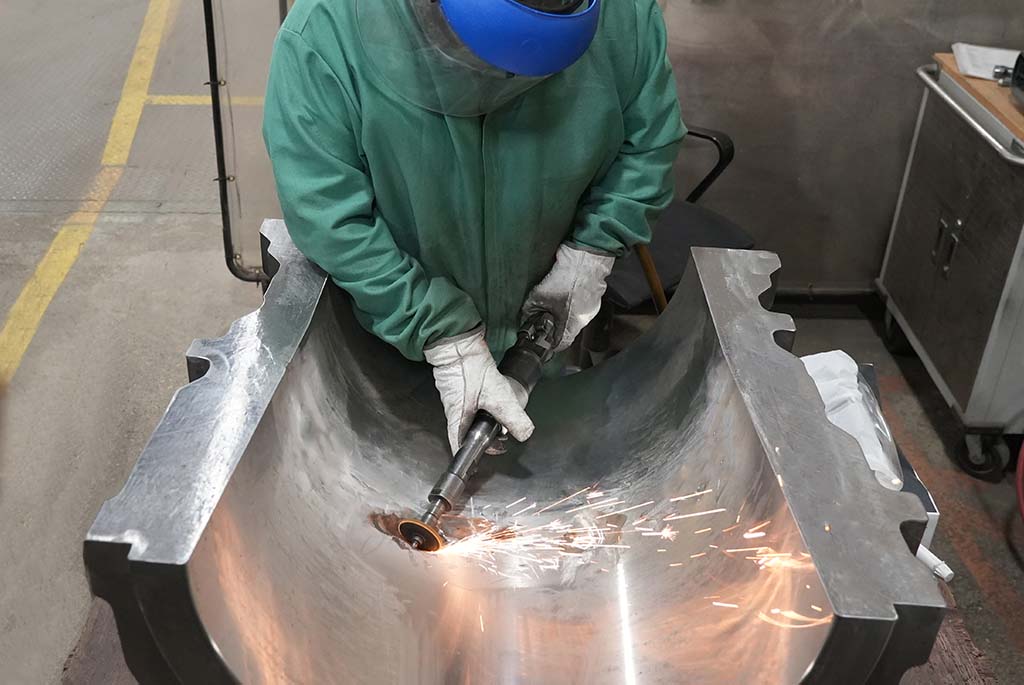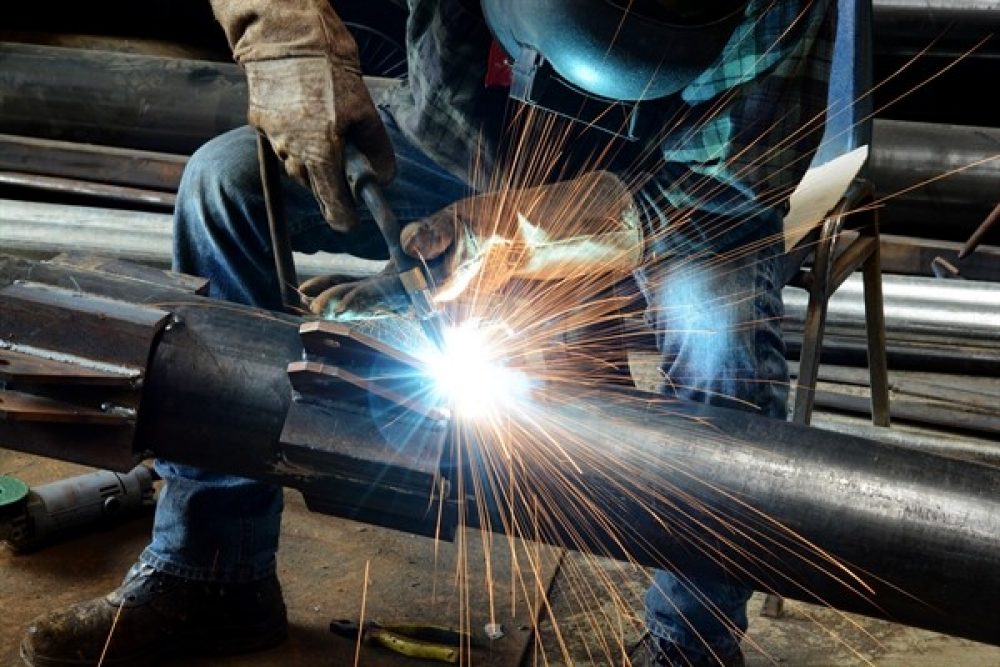Quick solutions to weld misalignment in Montana Mobile Welding and Repair Fabrication
Usual Welding Repair Issues and Exactly How to Address Them Effectively
Welding repair work commonly experience a variety of problems that can threaten the honesty of the end product. Common issues consist of insufficient penetration, porosity, and imbalance, amongst others. Each issue provides distinct obstacles that call for particular techniques for resolution. Comprehending these issues is vital for welders aiming to enhance their abilities and results. This discussion will explore these usual welding repair service concerns and effective techniques to resolve them.
Insufficient Infiltration
Poor infiltration happens when the weld metal fails to totally fuse with the base material, resulting in weak joints and prospective architectural failings. This issue often comes from not enough heat input, wrong electrode angle, or inappropriate welding rate. Welders may run into inadequate penetration as a result of a miscalculation of the necessary criteria for a details product thickness or type. Furthermore, contamination on the base product's surface can hinder efficient bonding, exacerbating the trouble. To deal with inadequate infiltration, welders ought to assure proper setups on their tools and maintain a clean work surface. Regular inspection of welds is suggested to recognize any kind of shortages early, allowing for prompt improvements and the prevention of compromised structural stability in bonded settings up.
Porosity
Porosity is a typical issue in bonded joints that shows up as small gas bubbles entraped within the weld metal. This issue can jeopardize the integrity of the weld, causing reduced stamina and possible failure under tension. Belgrade Fabrication. Porosity usually emerges from contamination, wetness, or incorrect welding techniques, which permit gases to leave right into the liquified weld pool. To resolve porosity, welders should ensure appropriate surface preparation, maintain a tidy workplace, and make use of suitable welding criteria. In addition, picking the ideal filler product and securing gas can mitigate gas entrapment. Routine examination and screening of welds can assist recognize porosity early, assuring prompt rehabilitative activities are taken, consequently maintaining the quality and dependability of the welded structure
Imbalance
Imbalance in welding can occur from numerous variables, including incorrect arrangement and thermal expansion. Comprehending the source is crucial for effective resolution. Numerous adjustment techniques are readily available to straighten elements and assure architectural stability.
Causes of Imbalance
Welding imbalance usually originates from a variety of underlying issues that can compromise architectural honesty. One main reason is improper fit-up of parts prior to welding, which can result in voids and uneven surface areas. Variations in thermal development during the welding process can likewise result in distortion, particularly if the materials being joined have different coefficients of growth. Additionally, poor fixturing and clamping may fall short to hold elements securely in place, causing motion throughout welding. Badly conserved equipment, including welding devices and tools, might present inconsistencies in the weld bead, more adding to imbalance. Finally, operator mistake, coming from not enough training or experience, can additionally play a significant role in producing misaligned welds.
Improvement Strategies Offered
Addressing imbalance successfully needs a mix of rehabilitative methods tailored to the details problems available. One common method is using components or jigs to hold parts in the appropriate setting throughout welding, ensuring regular positioning. Furthermore, preheating the products can help in reducing distortion and enhance fit-up. For substantial misalignment, mechanical adjustment methods, such as using hydraulic jacks or clamps, can be used to deal with the setting before welding. Post-weld warmth treatment might likewise be necessary to ease stresses triggered by imbalance. Cautious evaluation and modification throughout the configuration stage can protect against misalignment concerns from becoming substantial troubles, promoting a smoother welding process and boosting total structural honesty.
Distortion
Distortion is a common obstacle in welding that can develop from numerous aspects, consisting of unequal cooling and heating. Understanding the reasons for distortion is vital for implementing efficient avoidance methods. Resolving this problem not just improves architectural honesty but additionally improves the overall quality of the weld.
Reasons of Distortion
When subjected to the intense heat of welding, products commonly go through modifications that can bring about distortion. This sensation largely occurs from thermal development and tightening during the welding process. As the weld location warms up, the material expands; upon cooling, it contracts, which can produce internal stress and anxieties. Additionally, unequal heating across a workpiece can worsen these tensions, resulting in bending or bending. The type of product additionally plays a significant role; metals with differing thermal conductivity and coefficients of growth might respond in different ways, causing uncertain distortions. Additionally, bad joint layout and insufficient fixturing can add to misalignment throughout welding, raising the chance of distortion. Understanding these reasons is vital for reliable welding repair and avoidance methods.
Prevention Techniques
Effective prevention methods for distortion throughout welding focus on managing heat input and making sure correct joint design. Preserving a constant warmth input helps to minimize thermal expansion and contraction, which can cause distortion. Using methods such as preheating the workpiece can additionally decrease the temperature level slope, promoting uniform home heating. Additionally, picking suitable joint designs, such as T-joints or lap joints, can improve security and lower stress concentrations. Carrying out proper fixturing to secure the workpieces in position additionally help in maintaining positioning throughout the welding process. Staggered welding sequences can distribute heat a lot more uniformly, preventing local distortion. By applying these approaches, welders can considerably lower the likelihood of distortion and enhance the total high quality of their welds.
Fracturing
Cracking is an usual issue come across in welding fixings, typically resulting from different aspects such as incorrect cooling prices, product choice, or inadequate joint preparation. The occurrence of splits can significantly compromise the integrity of the weld, bring about possible failings throughout procedure. To resolve this issue, welders must first analyze the root creates, guaranteeing that materials are suitable and appropriately picked for the details application. Additionally, managing the air conditioning price during the welding process is vital; rapid cooling can induce stress and result in breaking. Proper joint design and preparation also add to decreasing the risk. Carrying out these techniques can boost weld top quality and durability, ultimately decreasing the chance of splitting in ended up weldments.

Insufficient Fusion
A significant problem in welding repair services is incomplete combination, which happens when the weld steel does not appropriately bond with the base product or previous weld passes - Montana Mobile Welding and Repair. This issue can cause weak points in the joint, potentially compromising the integrity of the welded structure. Variables contributing to incomplete blend consist of inadequate heat input, improper welding technique, and contamination of the surfaces being signed up with. To resolve this problem efficiently, welders must guarantee correct pre-weld cleansing and surface area prep work, along with adjust their welding parameters to attain ample infiltration and blend. Normal evaluation throughout the welding process can likewise aid recognize incomplete fusion early, enabling for prompt corrective procedures to boost the general high quality of the weld
Overheating
While welding repair work can boost structural stability, overheating presents a substantial difficulty that can bring about material deterioration. Too much warmth throughout welding can modify the mechanical buildings of steels, causing reduced toughness, raised brittleness, and bending. This sensation is especially important in high-stress applications where structural dependability is paramount. Recognizing overheating can include visual assessments for staining or distortion, along with monitoring temperature throughout the welding process. To minimize the dangers connected with overheating, welders need to use appropriate techniques, such as controlling warm input, readjusting traveling speed, and using appropriate filler materials. Furthermore, carrying out pre- and post-weld heat therapies can aid recover product homes and improve the total quality of the fixing, guaranteeing long-term efficiency and safety.
Often Asked Questions
What Are the Usual Indications of a Welding Defect?

How Can I Check My Welds for Quality?
To examine welds for quality, one can utilize visual evaluations, ultrasonic screening, and radiographic techniques. Each method guarantees architectural stability, recognizes flaws, and confirms adherence to defined requirements, ultimately boosting the integrity of the welded joints.
What Security Preventative Measures Should I Take While Welding?
When welding, one should prioritize safety by using suitable individual protective devices, guaranteeing appropriate air flow, securing flammable materials away, keeping a tidy work space, and knowing surroundings to protect against mishaps and injuries.
Can I Fix a Weld Without Remodeling the Entire Joint?
Repairing a weld without remodeling the whole joint is feasible, relying on the damage (Montana Mobile Welding and Repair Belgrade Fabrication). Strategies such as grinding, including filler material, or using a welding process can efficiently deal with specific defects while preserving the bordering framework
What Devices Are Vital for Efficient Welding Fixes?
Essential devices for effective welding repair services consist of a welding device, cord brush, mill, safety gear, clamps, and filler materials. Each device plays a crucial role in making certain quality and safety throughout the fixing procedure. Porosity typically develops from contamination, wetness, or incorrect welding methods, which allow gases to get away into the molten weld swimming pool. Inadequately kept devices, consisting of welding makers and devices, might present variances in the weld bead, more contributing to imbalance. When subjected to the intense warmth of welding, materials typically go through modifications that can lead to distortion. Cracking is a common concern come across in welding fixings, commonly resulting from numerous aspects such as improper cooling prices, material selection, or insufficient joint prep work. A significant issue in welding repair services is insufficient combination, which takes co2 welding place when the weld metal does not sufficiently bond with the base material or previous weld passes.